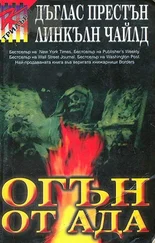“Um, if there’s anything you need—?” called the chief at his retreating back.
Pendergast waved a hand behind him. “I need Vincent. Are you coming?”
D’Agosta set off after him, struggling to keep up, the chief right behind. “Don’t you want to examine the house?” D’Agosta managed to ask.
“No.” Pendergast quickened his pace still further, coat flapping behind him, bent slightly forward as if bracing himself against the stiff wind.
“Where are you going?” D’Agosta asked, not receiving an answer.
They finally reached the hedge, which D’Agosta could see hid a tall stone wall. Here Pendergast whirled. “Chief Denton, has your CSU team gone over this area yet?”
“Not yet. There’s a lot of ground to cover, and this is pretty far from the scene of the crime—” But before he finished his sentence Pendergast had turned away and was walking alongside the hedge, looking this way and that, placing his feet carefully, like a cat. Suddenly he halted, dropped to his knees.
“Blood,” he said.
“Okay,” said Denton. “Nice catch. We should back away from here, get the CSU team out before we disturb anything—”
But Pendergast was up and moving again, head bowed, following the stains, which led into the hedge — and that was when D’Agosta saw something white inside the tangle of green. They peered into the depths, where D’Agosta could make out a gruesome sight.
“Two bodies and a dead dog,” said Pendergast, turning to Denton and slowly backing away. “Yes, please do get your CSU team out here. In the meantime, I’m going over the wall.”
“But—”
“I’ll move a little farther down so as not to disturb this area. Vincent, come with me, please. I’ll need a hand.”
Chief Denton stood near the scene of carnage, calling for the CSU team on his radio, while D’Agosta followed Pendergast down the hedge line for a hundred feet.
“This looks like a good spot.” Pendergast pushed into the hedge, D’Agosta following. They emerged into the gap between hedge and wall.
Pendergast pressed against the wall, as if testing it. “In this bulky coat, I’ll need a hand up.”
D’Agosta didn’t argue; he helped him up.
The agent scrambled like a spider to the top, slipped over the short iron spikes, then stood up and looked around with a pair of binoculars. Then he called down to D’Agosta.
“Go back to the car, have Proctor drive around and out on the beach. I’ll meet you there.”
“Right.”
Pendergast disappeared over the wall and D’Agosta turned away. As he emerged from the hedge, he could see a team of CSU guys running across the lawn, all dressed, masked, and bootied up, with Denton pointing to the area where the bodies had been found. Denton joined him as he was walking back across the lawn.
“How the hell did he do that so quickly?” he asked. “I mean, we would have found it eventually, but he just walked straight out there like it was attached to a neon sign.”
D’Agosta shook his head. “I don’t ask, and he doesn’t tell.”
Sitting once again in the back of the Rolls, D’Agosta watched as Proctor drove into a public parking area adjacent to the beach about half a mile south of the victim’s house. The man got out, released a precise amount of air from the tires, then got back in, gunning the engine and shooting down a sandy lane that provided vehicle access to the beach. Soon the Rolls was flying north along the strand, the booming Atlantic on their right, the mansions of the rich on their left. In a moment D’Agosta could see Pendergast’s slender figure standing on the end of a rocky breakwater. As Proctor slewed to a stop, Pendergast came back along the breakwater, strode up the beach, and slid into the backseat.
“He came and went by small craft, which he hid next to that breakwater,” Pendergast said, pointing. Then he pulled open his own folding desk, which held a slim MacBook, which he opened and used to call up Google Earth. “The assassin, leaving the scene of the crime, was extremely vulnerable and exposed out on the water, even at night. He would have disposed of his boat at the earliest opportunity. And it all would have been planned ahead of time.”
He peered at the Google Earth image, moving it around their current location. “Vincent, look — there’s an inlet right here, just six miles away, leading into Sagaponack Pond. And just inside the inlet is a marshland with a public parking area immediately adjacent.” He leaned toward the front seat. “Proctor, please drive there posthaste. Sagaponack Pond. Don’t bother with the road — take the beach.”
“Yes, sir.”
D’Agosta gripped his seat as the Rolls accelerated, performed a slewing U-turn in a fountain of sand, and then roared down the beach at high speed, just within the high-tide area where the sand was harder. As they picked up speed, rocking from side to side, the car was buffeted by wind and sea spray from the ocean and occasionally plowed through a skimming of water from a retreating wave, throwing up a curtain of spray. They passed an elderly couple walking hand in hand, who stared at them slack-jawed as the 1959 Silver Wraith boomed past at close to sixty miles an hour.
In less than ten minutes they had arrived at the inlet, where the beach stopped and another breakwater led out into the gray and foaming Atlantic. Proctor brought the Rolls to a shuddering halt, fishtailing in another great spray of sand. Before it had even come to rest, Pendergast was out the door and striding up the beach, D’Agosta once again running to keep up. He was astonished at Pendergast’s energy after the previous days of apathy and apparent sloth. It seemed this set of murders had finally hooked him.
They hopped over a beach fence, crossed an area of scrubby dunes, and soon a sheet of slate-colored water came into view, surrounded by a broad marshland. Pendergast plunged into the marsh grass, his handmade John Lobb shoes sinking into the mucky ground. With little enthusiasm D’Agosta followed, feeling the icy mud and water invade his own Bostonians. A few times Pendergast paused to look around, his nose in the air almost like a bloodhound’s, before moving ahead in a different direction, following soggy and almost invisible animal pathways.
Suddenly they reached the edge of the marsh — and there, not twenty feet along the verge, just emerging from the brown water, was the prow of a sunken skiff.
Pendergast glanced back, his silver eyes glittering. “And now, my dear Vincent, I think we have found our first actual piece of evidence left by the killer.”
D’Agosta edged over and looked at the boat. “I’ll say.”
“No, Vincent.” Pendergast was pointing at something on the ground. “This: a clear foot impression from the killer.”
“Not the boat?”
Pendergast waved his hand impatiently. “I have no doubt it was stolen and has been thoroughly scrubbed of evidence.” He crouched in the marsh grass. “But this! A size thirteen shoe, at least.”
The conference room at One Police Plaza was a big blond space on the third floor. D’Agosta had arrived early with Singleton, the deputy commissioner for public information, Mayor DeLillo, and a row of uniformed officers, so that when the press arrived they would see an impressive, solid wall of blue and gold, backed by suits and the mayor himself. The idea was to create a reassuring visual for the evening news. In his years at the NYPD, D’Agosta had seen the department move from inept, ad hoc responses to the press to this: professional, well staged, and quick to react to the latest events.
He wished he felt the same confidence in himself. The fact was that, with the rise of bloggers and digital bloviators, there was far more media now in a typical press conference, and they were less well behaved. Most of them were outright pricks, truth be told, especially among the social media crowd, and these were the people whose questions D’Agosta had to answer — with a self-assurance he didn’t feel.
Читать дальше
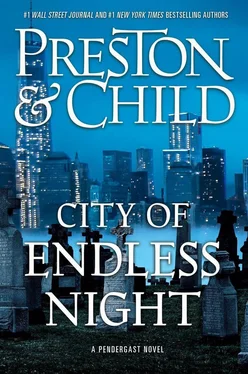
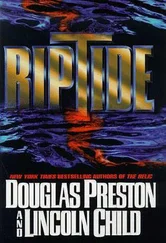
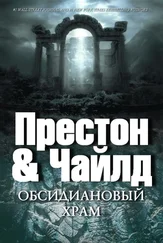
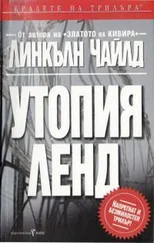
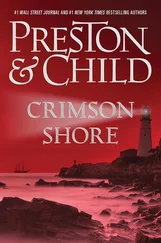

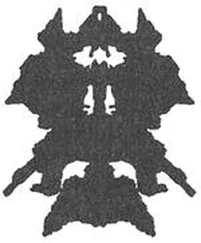


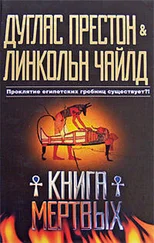
![Линкольн Чайлд - Стихи для мертвецов [litres]](/books/396536/linkoln-chajld-stihi-dlya-mertvecov-litres-thumb.webp)
